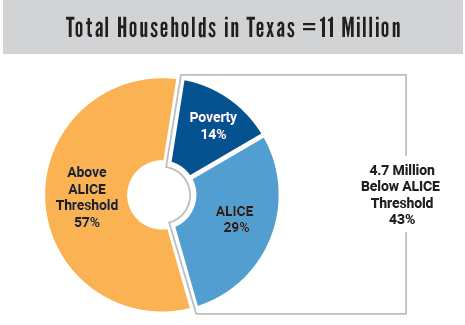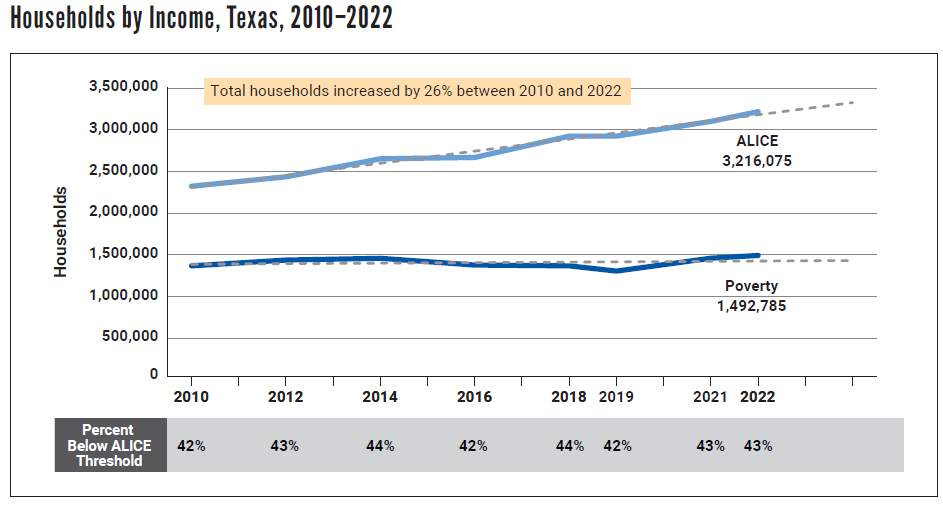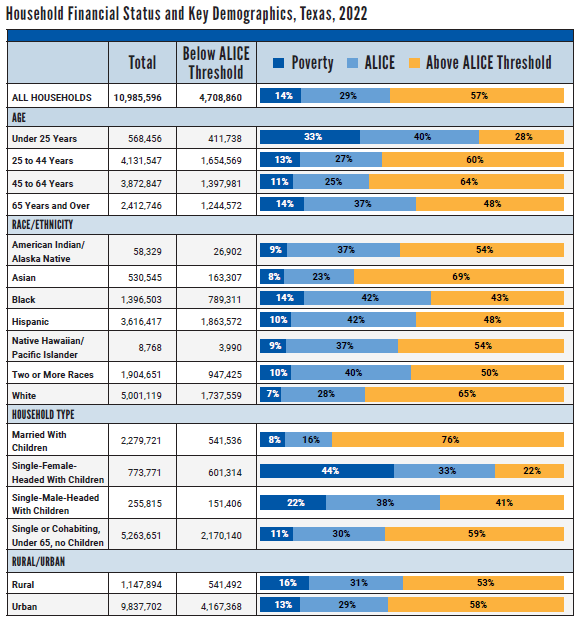Since the end of the Great Recession, financial hardship in Texas has shown fluctuations, but the overall trend is undeniable: the number of ALICE (Asset Limited, Income Constrained, Employed) households has been steadily rising. Between 2010 and 2022, the total number of households in Texas grew by 26%, households in poverty increased by 9%, and ALICE households surged by 38%. By 2022, 14% of households (1,492,785) fell below the Federal Poverty Level (FPL), while 29% (3,216,075) were classified as ALICE. Together, these groups accounted for a significant 43% (4,708,860) of households struggling to make ends meet.



The ALICE measures show three critical trends at the state level:
The cost of basic necessities—such as housing, childcare, food, transportation, healthcare, smartphone plans, and taxes—is increasing at a faster rate than other goods and services. This growing financial burden makes it harder for families to cover their essential needs and achieve financial stability.
The growth of low-wage jobs has created significant financial challenges for workers. Wages have seen only minimal increases, while unpredictable job hours, inconsistent schedules, and limited access to benefits make it increasingly difficult for individuals to budget and plan for their future. These obstacles highlight the need for greater economic stability and support for hardworking individuals striving to achieve financial security.
From 2007 to 2018, the number of households living in poverty remained relatively stable. However, ALICE (Asset Limited, Income Constrained, Employed) households continued to grow during this period, driven by the increasing cost of living and stagnant wages. This trend highlights the growing financial strain on hardworking individuals and families who struggle to afford basic necessities despite being employed. Addressing the challenges faced by ALICE households is critical to building stronger, more resilient communities.
